 |
 |
 |
 |
 |
 |
 |
 |
 |
 |
|
KICP Workshops & Events
|
KICP Lectures, Talks, & Events, 2010 Cafe Scientifique: Tom Crawford, "Cosmic Road Trip: From Chicago to the South Pole to Edge of the Universe" January 25, 2010 | 7:00 PM | Map Room, 1949 North Hoyne Ave Chicago, IL 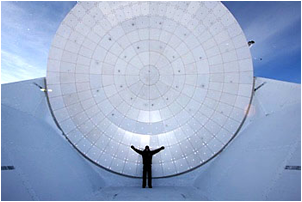 SPT website Related Links: KICP Members: Thomas M. Crawford Scientific projects: South Pole Telescope (SPT) SAIC Lecture: Juan Collar, "Searching for Dark Matter in the Sewers of Chicago" April 19, 2010 | SAIC Dean Lecture: Angela Olinto, "Do Black Holes Play Ball? - Cosmic Messengers of the High Energy Universe " May 10, 2010 | 7:30 PM | Morrison Planetarium, California Academy of Sciences Website The most energetic particles in the universe are ultra-high energy cosmic rays. Millions of times more powerful than anything produced by Earth-bound accelerators, their origin has remained a mystery for about a century. To search for evidence, an international collaboration of 18 countries recently completed construction of the Pierre Auger Observatory, an array of detectors spread over 3,000 square kilometers in western Argentina - covering an area as big as Rhode Island. During its construction, the observatory gathered enough ultra-high energy cosmic rays to find the first clues to their genesis. Read more >> Related Links: KICP Members: Angela V. Olinto Charles Steidel, 2010 Gruber Prize winner: "Observations of Structure Formation in the Adolescent Universe" October 15, 2010 | 4:00 PM | Assembly Hall, International House, The University of Chicago Website The Department of Astronomy & Astrophysics, the Kavli Institute for Cosmological Physics, and the Department of Physics are hosting a special colloquium on Friday October 15 at 4pm in Assembly Hall, International House. Speaker: Charles Steidel (California Institute of Technology), 2010 Gruber Prize winner Title: "Observations of Structure Formation in the Adolescent Universe" Charles Steidel, 2010 Gruber Cosmology Prize Winner Gruber Foundation Citation: Beginning with a series of breakthrough discoveries in 1995, Charles Steidel has led the exploration of distant galaxies, dating to an era when the universe was only one-tenth its current age, or about 12 billion years ago. That research not only extended astronomy's reach into the past but expanded cosmology's understanding of how galaxies have formed and evolved throughout the history of the universe. Gruber Foundation press release Read more >> Related Links: KICP Members: Michael S. Turner GLPA Conference: Kumiko Kotera, Maria Monasor, and Benjamin Rouille d'Orfeuil, "Ultrahigh Energy Cosmic Rays: A Few Grams of Matter in a Bright World" October 21, 2010 | 1:00 PM  2010 Great Lakes Planetarium Association (GLPA) Conference SESSION I The most energetic particles in the universe are ultra-high energy cosmic rays. These sub-atomic particles pack as much energy as a professional tennis player's serve. Millions of times more powerful than anything produced by man-made accelerators, their origin has been a mystery for about a century. Over the last several years, an international collaboration of 18 countries joined forces to solve this mystery by building the Pierre Auger Observatory. Spread over 3,000 square kilometers, an area five times the size of Paris, as big as the state of Rhode Island, in western Argentina, this observatory was recently completed. During its construction, the observatory gathered enough of these rare particles to find the first clues to their origin. The most energetic of these particles tend to point to cosmologically nearby galaxies that host super massive black holes at their centers. Over the next years, scientists working on Auger will be carefully studying these most extreme particles, learning where they come from and what they are made of in order to solve the longstanding mystery of where they come from and how they are accelerated to the highest energies ever observed. This workshop will focus on the science of UHECRs and practical tips for using UHECR data in your dome. Related Links: KICP Members: Kumiko Kotera; Maria Monasor; Benjamin Rouille d'Orfeuil Scientific projects: Pierre Auger Observatory (AUGER) GLPA Conference: Randy Landsberg and Mark SubbaRao, "Cutting Edge Research Invades the Dome" October 21, 2010 | 3:00 PM  2010 Great Lakes Planetarium Association (GLPA) Conference SESSION II Astrophysical research that pushes the frontiers of our understanding of the universe can seem daunting and complex for planetarium visitors and staff alike. Join us for a full dome visual exploration of modern research. We will examine a collection of data and images of the remote observatories where the data is taken, and demonstrate how these visualizations can be incorporated into programming at your home institution. These visual tools were developed through a collaboration between planetarium staff at the Adler Planetarium & Astronomy Museum and researchers at the University of Chicago and other institutions. Our journey will include: - flying through the Sloan Digital Sky Survey Data - being bombarded by Ultra High Energy Cosmic Rays - watching simulations of billions of years of evolution of the Large Scale Structure of the Universe - viewing simulations of the Epoch of Re-Ionization - experiencing Super Nova explosions (simulations) - visiting observatories around the globe Related Links: KICP Members: Randall H. Landsberg; Mark Subbarao SAIC Lecture: Andrey Kravtsov, "Modeling the Universe" October 28, 2010 | SAIC 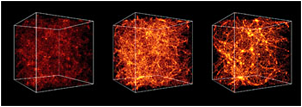 Related Links: KICP Members: Andrey V. Kravtsov SAIC Lecture: Mike Gladders, "Cosmic Telescopes: Gravitational Lensing by The Most Massive Structures in the Universe" November 18, 2010 | 4:30 PM | SAIC, MacLean Building, Room 417 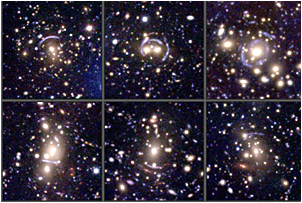 Related Links: KICP Members: Michael D. Gladders Physics with a Bang! & Ask a Scientist December 4, 2010 | 11:00 AM | KPTC, University of Chicago Website Physics with a Bang! Students, families, teachers and especially the curious are invited to attend our annual Holiday Lecture and Open House. See fast, loud, surprising and beautiful physics demos performed by Profs. Heinrich Jaeger and Sidney Nagel. Talk to scientists about their latest discoveries. Participate in hands-on activities related to their research. Ask a Scientist Join C2ST to ask those burning science questions to current researchers in the fields of astronomy and astrophysics, physics and chemistry. Walk through guided tours of Gordon Center for Integrative Sciences to have hands-on experience performing experiments. KERSTEN PHYSICS TEACHING CENTER UNIVERSITY OF CHICAGO 5720 South Ellis Avenue, Chicago, IL Lecture repeated at 11:00am and 2:00pm Open House from 11:00am-4:00pm Event sponsored by the James Franck Institute, Department of Physics, and Materials Research Science & Engineering Center (MRSEC). Read more >> Related Links: KICP Members: Joshua A. Frieman Michael Turner, Works of the Mind Lectures: How Many Universes? December 5, 2010 | 1:00 PM | Chicago Cultural Center in the Claudia Cassidy Theater Michael Turner, Bruce and Diana Rauner Distinguished Service Professor, and director, Kavli Institute for Cosmological Physics, the University of Chicago This lecture will explore the development of our knowledge and understanding of the extent of the Universe - in both space and in time. Beginning 100 years ago with the view that the universe contained a single galaxy, a few million visible stars and 9 planets, we will move on to Hubble's discovery of billions of other galaxies and the expansion of the Universe and to current understanding of a Universe comprised of dark matter and dark energy with billions of planets (now only 8 in our solar system!). The lecture will end with speculations about the multiverse and its philosophical implications. Related Links: KICP Members: Michael S. Turner Benjamin Dean Lecture: Josh Frieman, "The Dark Universe and the Origin of Structure" December 6, 2010 | 7:30 PM | Morrison Planetarium, California Academy of Sciences 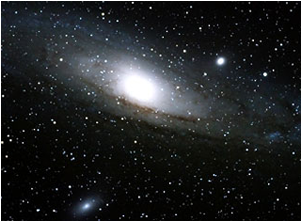 Josh Frieman is a senior staff scientist at the Fermilab Center for Particle Astrophysics and Professor of Astronomy and Astrophysics and a member of the Kavli Institute for Cosmological Physics at the University of Chicago. He currently directs the Dark Energy Survey, a collaboration of more than 120 scientists worldwide which is building a 570-Megapixel camera for a telescope in Chile to probe the origin of cosmic acceleration. Related Links: KICP Members: Joshua A. Frieman Juan Collar, Rocky Kolb, and Carlos Wagner, "Chicago's Dark Matter: WIMPs of the Underground" December 9, 2010 | 5:00 PM | Northwestern University, Chicago Campus Website Dr. Juan Collar Dr. Rocky Kolb Dr. Carlos Wagner The next decade will be the decade of the WIMP, the best candidate for dark matter. Astronomers tell us dark matter exists, as well as how much there is. Cosmologists have a simple, elegant, compelling explanation for dark matter: a weakly interacting massive particle (WIMP) that was produced in the primordial soup. If WIMPs are the dark matter, we should be on the threshold of producing them at accelerators like CERN or Fermilab, or detecting the relic WIMPs underground. We should soon know if WIMPs are the answer, or just another simple, elegant, and compelling, but wrong, explanation. Read more >> Related Links: KICP Members: Juan I. Collar; Edward W. Kolb; Carlos E. M. Wagner |


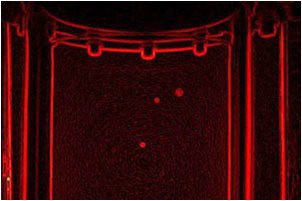
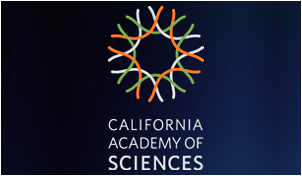
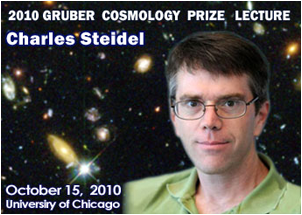

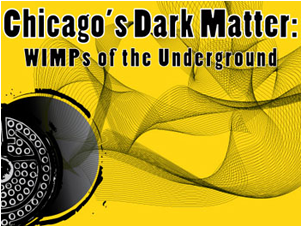



 Overview
Overview